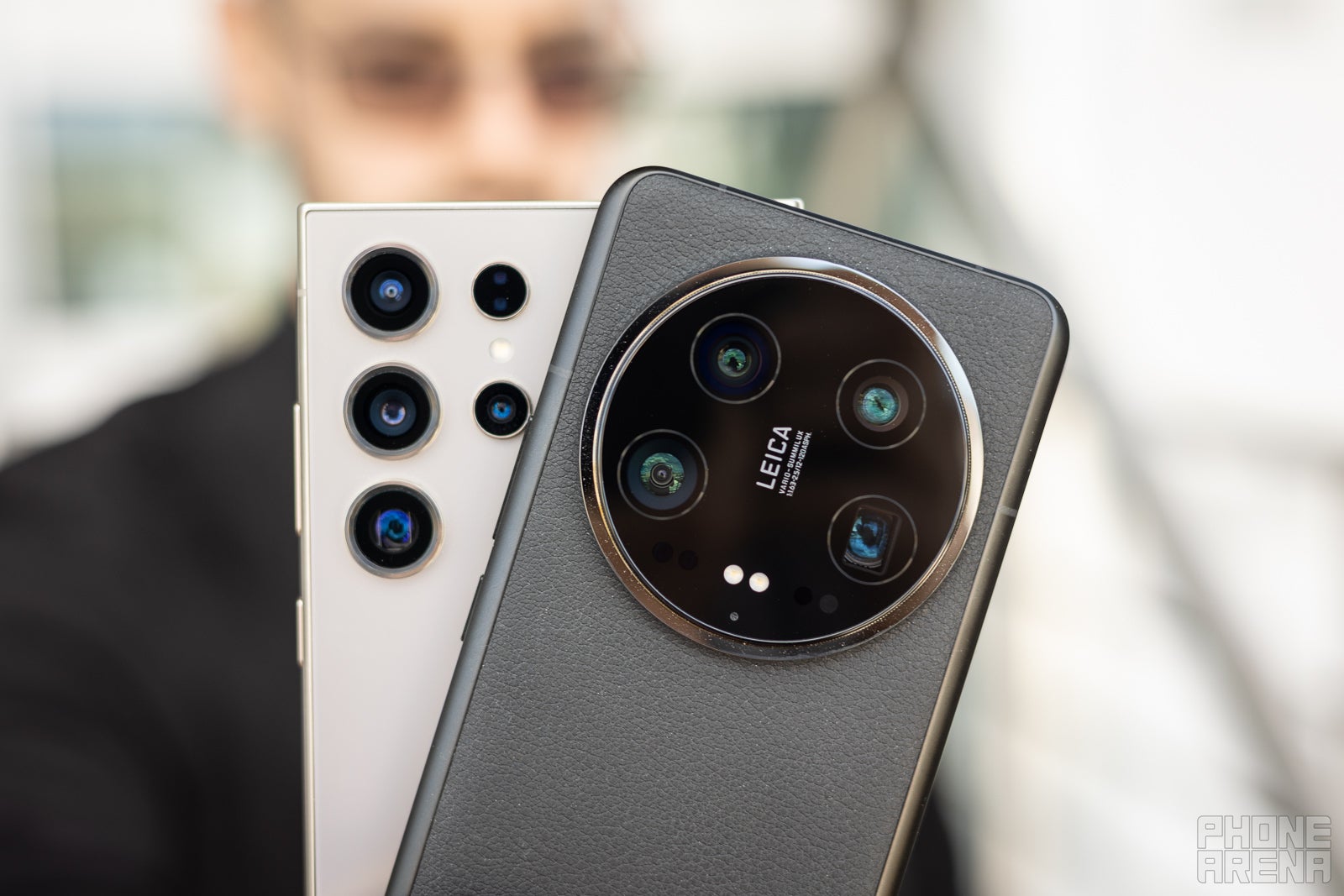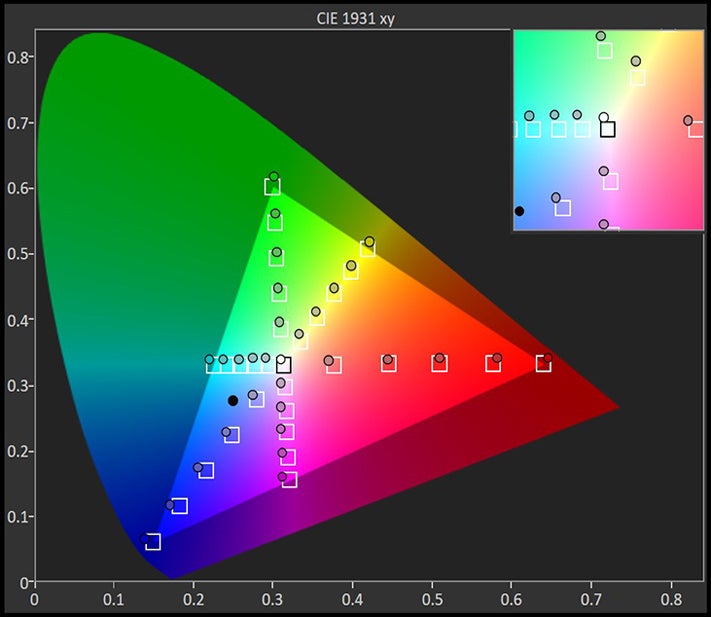Xiaomi 14 Ultra vs Samsung Galaxy S24 Ultra: Heavy is the Ultra crown
We may earn a commission if you make a purchase from the links on this page.

Intro
When it comes to smartphones, the word "ultra" currently describes devices that occupy the utmost top of the food chain. Today, we're comparing two phones with "ultra" in their names, the Xiaomi 14 Ultra and the Galaxy S24 Ultra.
These two have a lot in common, and if you compare the specs side by side, you will definitely see some matches. Specswise, both the Xiaomi 14 Ultra and the Galaxy S24 Ultra come with top notch hardware, and the main difference lies in the design of the phones.
The Galaxy S24 Ultra is, of course, very easy to get in the US, both through all the major carriers and also unlocked and contract-free, while the Xiaomi 14 Ultra is technically available globally, but you will need to put in some extra effort in order to get one. As far as prices go, the Xiaomi 14 Ultra comes in at a whopping 1,499 euros (more than $1,600), while the Galaxy S24 Ultra starts at $1,299.99.
These two have a lot in common, and if you compare the specs side by side, you will definitely see some matches. Specswise, both the Xiaomi 14 Ultra and the Galaxy S24 Ultra come with top notch hardware, and the main difference lies in the design of the phones.
UPDATE: The Galaxy S25 Ultra is now official, and you can check out our extensive comparisons featuring Samsung's new ultra-premium flagship, including ones with the Xiaomi 15 Ultra.
- Xiaomi 15 Ultra vs Galaxy S25 Ultra: The main differences between the two Ultra champs
- Samsung Galaxy S25 Ultra vs Galaxy S24 Ultra: do we need a refresh?
- Samsung Galaxy S25 Ultra vs Google Pixel 9 Pro XL: A friendly but heated rivalry
- Samsung Galaxy S25 Ultra vs iPhone 16 Pro Max: The best phones right now
Xiaomi 14 Ultra vs Galaxy S24 Ultra differences explained:
| Xiaomi 14 Ultra | Galaxy S24 Ultra |
|---|---|
| A tad more compact and lightweight | Larger and heavier but not by much |
| Slightly smaller 6.73-inch display, but brighter and crisper | Bigger 6.8-inch screen, same resolution, a little less pixels per inch |
| Four 50MP cameras, two telephoto cameras with similar zoom levels, the ultrawide has larger field of view | Four cameras, with a 200MP sensor under the main one, two telephotos, and a ultrawide |
| More memory in the top tier version (16GB/1TB) | Less memory in the top tier version (12GB/1TB) |
| 32MP selfie camera | 12MP selfie camera |
| Same battery size (5,000mAh) but faster wired charging (90W) | Same battery size (5,000mAh) but slower wired charging (45W) |
| Four years of major OS updates | Seven years of major OS updates |
Table of Contents:
Design and Display Quality
Flat vs curvy

Let's start with the size, as both phones are quite hefty. The Galaxy S24 Ultra has a bigger screen, which translates to a larger body and a heavier phone. Not by much, but you will definitely feel the difference in your hand, mainly due to the different design approach.
The Galaxy S24 Ultra is flatter and much more squarish than the Xiaomi 14 Ultra, and it feels very wide in the hand. The Xiaomi, on the other hand, thanks to its rounded corners and slightly curved back and front, feels more compact in the hand.
The Galaxy S24 Ultra is flatter and much more squarish than the Xiaomi 14 Ultra, and it feels very wide in the hand. The Xiaomi, on the other hand, thanks to its rounded corners and slightly curved back and front, feels more compact in the hand.
The most noticeable difference, though, is the huge circular camera bump on the back of the Xiaomi 14 Ultra. It follows Xiaomi's design philosophy from previous iterations of the model and also goes well with the camera accessory, but the Galaxy S24 Ultra looks more stylish with its separate camera cutouts. Both phones sport IP68 water and dust protection, and both phones offer a titanium frame (it's a special edition model for the Xiaomi 14 Ultra; the regular model uses aluminum).

Moving to display specs, we find some similarities here as well. The resolution of both panels is very similar: 1440 x 3200 pixels for the Xiaomi 14 Ultra and 1440 x 3120 pixels for the Galaxy S24 Ultra. The size difference translates into a higher pixel-per-inch density for the Xiaomi, 522 PPI versus 505 PPI, respectively. In practice, both are very crisp and sharp, and you probably won't be able to tell the difference.
Both phones sport LTPO panels that can dynamically switch between 1 and 120 Hz refresh rates (with everything in between), and both can output some impressive brightness numbers. On paper, the Xiaomi can do 3,000 nits of peak brightness, while the Galaxy lists 2,600. During our lab tests, we weren't able to push the Xiaomi past the 1,000 nit mark but overall, both phones look very bright subjectively, and display colors pretty accurately.
Both phones sport LTPO panels that can dynamically switch between 1 and 120 Hz refresh rates (with everything in between), and both can output some impressive brightness numbers. On paper, the Xiaomi can do 3,000 nits of peak brightness, while the Galaxy lists 2,600. During our lab tests, we weren't able to push the Xiaomi past the 1,000 nit mark but overall, both phones look very bright subjectively, and display colors pretty accurately.
Both phones use an under-display fingerprint sensor for biometrics, coupled with a face unlock option. As far as we can tell, the Galaxy S24 Ultra is a tad faster when unlocking thanks to the ultrasonic tech. The Xiaomi is no slouch either, so biometrics are not a deciding factor when choosing between these two.
Performance and Software
Snapdragon battles with a sparkle of AI

The latest Qualcomm silicon lurks inside both of these phones, namely the Snapdragon 8 Gen 3. The memory situation is very similar, with a base configuration starting at 12GB of RAM paired with 256GB of storage, while in the top tier versions there's a slight difference. The Xiaomi 14 Ultra goes up to 16GB of RAM on the 1TB version, while the Galaxy S24 Ultra keeps it at 12GB.
Performance Benchmarks:
The Xiaomi 14 Ultra has an edge in synthetic benchmark, scoring higher in single and multicore tests. During 3DMark's Wildlife Extreme stress test the Galaxy S24 Ultra managed to score higher overall, but failed to sustain this score and the performance quickly dropped off, while the Xiaomi 14 Ultra was much more consistent and all in all managing the thermal dissipation better. In day-to-day tasks, both the Xiaomi 14 Ultra and the Galaxy S24 Ultra performed smoothly, as expected.
When it comes to software, the situation is slightly in favor of the Galaxy S24 Ultra, we think. Galaxy AI works great, and it's well thought out, while the Xiaomi 14 Ultra still explores the possibilities in that area. What's more, the Galaxy now comes with a lengthy seven-year software support, while the Xiaomi offers only four years of major OS updates. If you plan to hold your phone for more than four years, the Galaxy S24 Ultra is probably the better choice here.
Camera
A four-eyes affair

The camera systems of the Xiaomi 14 Ultra and the Galaxy S24 Ultra are very similar in what they try to achieve. The philosophy behind the four cameras is the same. On both phones, we have one main camera with a similar focal length and two telephoto cameras. The fourth one is ultrawide, as expected.
However, there are differences in the approach. The Galaxy S24 Ultra uses a 200MP sensor under an f/1.7 lens and some aggressive pixel binning, while the Xiaomi 14 Ultra relies on a 50MP sensor under a lens with variable aperture (1.6–4.0). It's a 1-inch sensor in the Xiaomi versus a 1/1.3" one in the Galaxy.
The telephoto cameras on the Xiaomi both use 50MP sensors and support 3.2x and 5.0x optical zoom. The Galaxy S24 Ultra, on the other hand, has one 10MP 3.0x telephoto and one 50MP 5.0x periscope zoom camera. The ultrawide camera on the Xiaomi is again a 50MP sensor under a lens with a 122-degree field of view, while the Galaxy uses a 12MP, 120-degree ultrawide camera.
These are all just specs and numbers. Time for some real-world samples!
However, there are differences in the approach. The Galaxy S24 Ultra uses a 200MP sensor under an f/1.7 lens and some aggressive pixel binning, while the Xiaomi 14 Ultra relies on a 50MP sensor under a lens with variable aperture (1.6–4.0). It's a 1-inch sensor in the Xiaomi versus a 1/1.3" one in the Galaxy.
The telephoto cameras on the Xiaomi both use 50MP sensors and support 3.2x and 5.0x optical zoom. The Galaxy S24 Ultra, on the other hand, has one 10MP 3.0x telephoto and one 50MP 5.0x periscope zoom camera. The ultrawide camera on the Xiaomi is again a 50MP sensor under a lens with a 122-degree field of view, while the Galaxy uses a 12MP, 120-degree ultrawide camera.
These are all just specs and numbers. Time for some real-world samples!
Main Camera
Daylight samples are pretty close between these two phones, one thing that stands out is the tonality of the samples. The Xiaomi 14 Ultra leans toward warmer colors, while the Galaxy S24 produces colder images. This is especially obvious when you put those side-by-side. Great detail and dynamic range in both samples.
The night shots are a bit different, though. Even though the tonal differences remain and the Xiaomi snaps warmer pictures, there's different level of HDR stacking applied on both phones. The result is brighter and more sharp images on the Xiaomi 14 Ultra. This might not be everyone's cup of tea, as with such aggressive night mode, images tend to look unreal, but it's down to your personal preference.
Zoom Quality
Both phones have sophisticated zoom cameras, and they both handle different zoom levels pretty good. We noticed that the Galaxy S24 Ultra tends to oversharp the images, while the Xiaomi produces softer pictures altogether.
Ultra-wide Camera
What's really interesting is that the tonal differences remain even in the ultrawide samples, which goes to show how post-processing algorithms rule the smartphone photography world. Here the Xiaomi and it's 50MP ultrawide camera with an aperture of f/1.8 clearly produces more detailed pictures with better dynamic range (check out the shadow under the stone monument).
Selfies
Selfies look better (to us) on the Galaxy S24 Ultra. They're more detailed and sharp, while on the Xiaomi 14 Ultra selfies look a bit washed-out and soft. You can discern much more details such as wrinkles (Yeah, Vic is getting old), and other facial imperfections on the Galaxy S24 Ultra sample.
Video Quality

Here's our head-to-head video comparison with some stills in it as well. What do you think? Do we have a clear winner, or both phones perform well?
Audio Quality and Haptics
The audio quality of the loudspeakers on both phones is great. This is partially due to the sheer size of the devices, but also to the good linear speakers mounted inside. Neither of these phones has a 3.5mm audio input, so you'll have to use an adapter or just settle for a pair of Bluetooth headphones.
The haptics are pretty strong and tight on both phones; you can't go wrong with either of the two.
The haptics are pretty strong and tight on both phones; you can't go wrong with either of the two.
Battery Life and Charging

The battery capacity is identical on the Galaxy S24 Ultra and the global version of the Xiaomi 14 Ultra; both come with a 5,000mAh cell inside. We say this because the Chinese model of the Xiaomi 14 Ultra has a 5,300mAh battery, probably using some sort of lithium-silicon hybrid technology that is not yet certified outside China.
We do our in-house battery tests aiming to replicate real-life usage as closely as possible, and the three components are web browsing, video streaming, and gaming. Looking at the results, it seems that the Galaxy S24 Ultra manages its dynamic refresh rate better, which can explain the web browsing score. In fixed refresh rate scenarios, namely YouTube streaming and gaming at 60Hz, the Xiaomi performs much better, pulling ahead with one hour in video streaming, and a whopping three-hour lead (almost 30%) in 3D gaming.
PhoneArena Charging Test Results:
When it comes to charging, the Xiaomi 14 Ultra has an advantage as a Far East model. We know phones from China are much braver with fast charging speeds nowadays, and the Xiaomi 14 Ultra is no exception with its 90W wired charging support (with an included charging brick, too). In reality, though, this huge advantage in wattage doesn't translate 1:1 to charging times. Yes, the Xiaomi 14 Ultra charges faster, but not twice as fast. Still, it beats the S24 Ultra in this category by a healthy margin.
Both phones support wireless charging, with the Xiaomi 14 Ultra sporting a whopping 80W wireless and 10W reverse wireless, while the Galaxy S24 Ultra manages just 15W wireless, and 4.5W reverse wireless.
Specs Comparison
For the tech geeks out there, here's a quick comparison table showing the phones side by side. We have a detailed specs comparison, and you can check it out here.
| Specs | Xiaomi 14 Ultra | Galaxy S24 Ultra |
|---|---|---|
| Dimensions | 161.4 x 75.3 x 9.2 mm | 162.3 x 79 x 8.6 mm |
| Weight | 219.8 g | 232 g |
| Screen | 6.73-inch AMOLED 120Hz | 6.8-inch Super AMOLED 120Hz |
| Processor | Snapdragon 8 Gen 3 | Snapdragon 8 Gen 3 |
| RAM, Storage and Price | 12/256GB for 1,499 euros | 12/256GB for $1,299 |
| Cameras | 50MP main, f/1.6-4.0 50MP telephoto 3.2X zoom f/1.8 50MP telephoto, 5X zoom, f/2.5 50MP ultra-wide, f/1.8 32MP front | 200MP main, f/1.7 10MP 3X zoom, f/2.4 50MP 5X zoom, f/3.4 12MP ultra-wide, f/2.2 12MP front |
| Battery Size | 5,000 mAh | 5,000 mAh |
| Charging Speeds | 90W wired 80W wireless 10W reverse wireless | 45W wired 15W wireless 4.5W reverse wireless |
Which one wins the battle then?

The Xiaomi 14 Ultra is a great phone, no doubt about it. But its asking price of 1,500 euros puts it in a very difficult situation. We don't see many people taking this particular leap of faith and going for the Xiaomi over the Galaxy S24 Ultra. But you're here to hear our opinion on the matter, after all. Which one should you buy?
If you want to try something different than your regular iPhones and Galaxies, the Xiaomi 14 Ultra is just that: an ultra-premium flagship with an excellent camera system, hardware, and battery. There are no obvious flaws other than its hefty price tag and availability in the US. For the less adventurous of you, the Galaxy S24 Ultra is a safer choice, and it comes with Galaxy AI and a stylus. Plus, you can potentially save even more cash through trade-ins and deals.
If you want to try something different than your regular iPhones and Galaxies, the Xiaomi 14 Ultra is just that: an ultra-premium flagship with an excellent camera system, hardware, and battery. There are no obvious flaws other than its hefty price tag and availability in the US. For the less adventurous of you, the Galaxy S24 Ultra is a safer choice, and it comes with Galaxy AI and a stylus. Plus, you can potentially save even more cash through trade-ins and deals.
Another thing to keep in mind is that the next gen Samsung flagship, the Galaxy S25 Ultra is now official, so you can either get the Galaxy S24 Ultra on a deal, or go for the new model. Furthermore, the Xiaomi 15 Ultra is currently being tested in our lab and this phone promises to offer some of the Xiaomi 14 Ultra goodness, so stay tuned for that as well.




































Things that are NOT allowed: